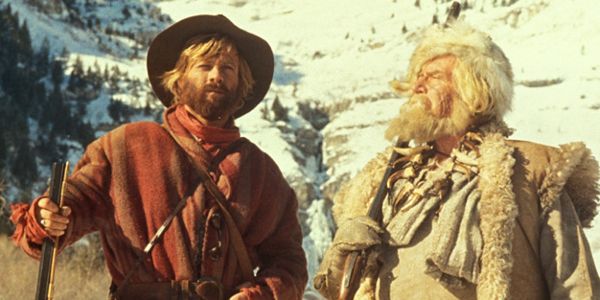When Autumn starts to feel like it’s run its’ course, I get a little giddy for the possibilities of Winter.
Not for winter sports and all that, but I dream of hibernation and the preparation for Spring that I never get to have.
When the first snowflakes fly, I secretly yearn to hunker down in front of a fire and file the teeth of my tree saw, sharpen my chainsaw chains, and eat hearty stews. Maybe finally read that book on beekeeping. In short, I want to be Robert Redford’s eponymous character in “Jeremiah Johnson,” just for a while. Disconnect from the world beyond, and savor the simple pleasures of doing all the things that will make me ready for the new year — when limbs will need cut, and things left undone during the icy season will become insistent.
When we lived in the Pacific Northwest, this long-dormant dream came back to life in my head: after all, it’s gonna be too cold and damp to do things, right?
But No: regardless of the season you slog through your regular routine. You learn to mow the grass in the rain, and garden in the rain if only on weekends. Responsibilities, don’t ‘cha know. We set aside our long-term growth, or improvement, for the short-term of dealing with today.
My Dad was the child of farmers, and some of the family still live on the same piece of land they’ve held for almost 500 years. In his life, he went from student to teenaged prisoner of war to Agriculture teacher to Army Captain, from Refugee to Surveyor, from factory worker to Vice President of a manufacturing company. For those of us who have one profession our whole lives, I marvel at him and wish I could talk to him again — to learn the many things he wouldn’t talk about to a child or young man, or things too painful to share.
He embraced the new but still held on to the old methods, knowing that some work better in some situations. I think of him often when doing a task that he taught me back in the property management days. At the peak, my family had one apartment building and 7 rent houses, where my labor helped pay for college. My skills as a carpenter, electrician, plumber, roofer, etc. all prepared me to care for old homes — being a caretaker of architecture and forgotten craftsmanship for the next generation. In 2022, our first home in Swan Lake will be 100 years old, and our current home clocks in at 82 years. I’ve written before about my efforts to preserve the good elements: the pieces that, with care, last way beyond their modern replacements.
I joke that recently I’ve completed my MBA in plumbing via dealing with a shower faucet replacement. This is a shower that’s not terribly old: it was installed during a remodel in the early to mid-90s, and we replaced the enclosure this year with a modern one of glass and brushed nickel. However, in replacing the shower equipment, we find that the seat for the cartridge in the wall is now becoming hard to replace. The next step will involve a plumber cutting copper pipe and installing a new seat. But it’s only 29 years old! Other shower and bath equipment in the house date from 1939 and 1962, and you can still find gaskets to keep them working fine.
I struggle with all the ways in which our modern society fails to take into account the hidden costs or seek to sell you more things more often. The new triple-paned windows whose frames won’t survive 15-20 years, or the decisions we make to maximize short-term profits at the expense of our long-term environment.
I’m starting to read The Good Ancestor, A Radical Prescription for Long-Term Thinking by Roman Krznaric. So far, I recommend it, and at the very least, give a look at his TED Talk here.
For me, these two issues converge more and more often. Builders build houses that command market rates but with cheaper and cheaper components. It’s no wonder that houses are gutted and reconfigured. Short-termism.
Our politicians maximize their personal profits at the expense of our environment. Even today (Nov. 16, 2020), the Trump administration is rushing furiously to sell off energy leases in Alaska as one of their last efforts to assuage and placate their corporate supporters, which will only increase the hydrocarbons released into the atmosphere. Or as Roman Krznaric puts it, “temporal myopia.”
No matter who you voted for, the problem is widespread and needs a solution. Since the 2020 Presidential election is the biggest vote count in over a century and yet still remains close, perhaps the time in the U.S. has come for new approaches that are not just R or D. Maybe we need new thinking (or a new party) that will address longer-term solutions that are often ignored or never considered. However, I think it best if such an approach be grassroots-derived, and battle-tested at first in local or state settings.
Perhaps in the Reddest of the Red States…you know who you are…
